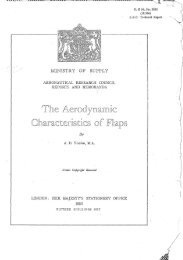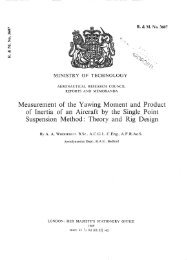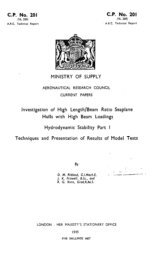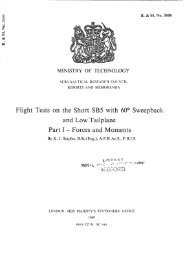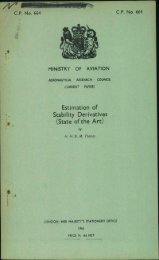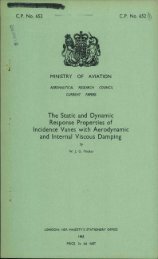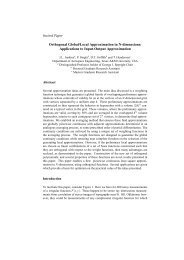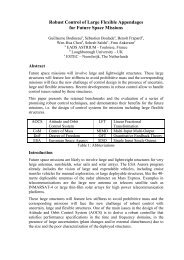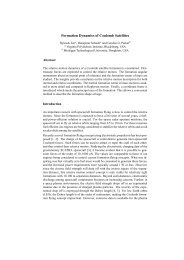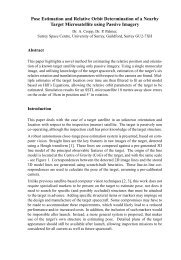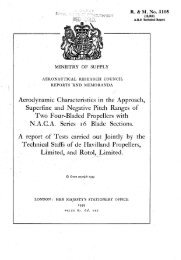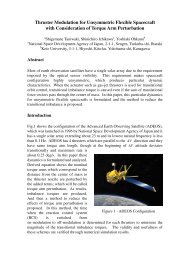A Survey of Unsteady Hypersonic Flow Problems
A Survey of Unsteady Hypersonic Flow Problems
A Survey of Unsteady Hypersonic Flow Problems
You also want an ePaper? Increase the reach of your titles
YUMPU automatically turns print PDFs into web optimized ePapers that Google loves.
-%-<br />
wiierc h and au are the flutter displacements in plunge and pitch, and the<br />
? a<br />
primes denote the operator - -. The coeffxients Z& involve the characteristics<br />
w at<br />
<strong>of</strong> the section, the mean incl 8 ence, Mach number, and frequenoy parameter: there<br />
arc two sets <strong>of</strong> coeffuSxdx,one for the plunge equation, the other for the<br />
pitch equation. These non-linear equations are first simplified under the<br />
assumption that, if the non-linearities are small ! information on the orders <strong>of</strong><br />
magnitude <strong>of</strong> terms can be obtained from the solution <strong>of</strong> the linearized problem,<br />
and certain terms in the non-linear equations can then be neglected because <strong>of</strong><br />
their smallness. It is also assumed that the mean incdence is zero. An<br />
approximate analysis <strong>of</strong> the simplified equations is then carried out. It is<br />
assumed, first, that if the section is flying at a speed close to the flutter<br />
speed predicted by a linearized analysis, and is subjected to a disturbance,<br />
It will stabilize to a finite periodic motion and that this motion can be<br />
represented. by<br />
m<br />
h, = T hneinwt b = 0; hBn = h;<br />
*=-ccl<br />
au = r a* eirwt a, = 0; a-* = a;<br />
*=-co<br />
. . . (4.15)<br />
where 19 and afi are the complex conjugates <strong>of</strong> hn and an. h and a<br />
allowd eo<br />
be complex so that it is possible to diow phase anglesnbetween the are<br />
aegrecs <strong>of</strong> freedom, but h, and au fan be shown to be real. For simple<br />
harmonic motion (single frequency) Ihn/ and IanI are equal to one half <strong>of</strong><br />
the corresponding amplztudes.<br />
It is then assumed that the fundamental harmonic <strong>of</strong> the two component<br />
motions dominant in the flutter motion, and. the equations are found which ensure<br />
that these components are balanced. Finally, if it is further assumed, on the<br />
basis <strong>of</strong> a linearized analysis, that the phase angle between the hu and au<br />
motions is very small, the equations for the motion become<br />
where the coefficients Zn are given below.<br />
h,, motion/



